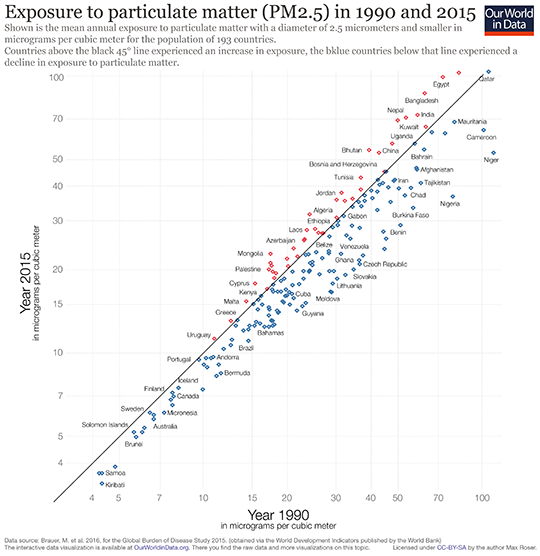PM2.5 and PM10
Background
PM 2.5 and PM 10 refers to small air born particles, i.e. Particulate Matter, where PM 2.5 has a diameter less than 2.5 µm (micrometers)
and PM10 a diameter smaller than 10 µm. PM10 particles are small enough to penetrate and get deep into the lungs, while PM2.5 particles,
with their even smaller size, are so small that they can also penetrate the lung barrier and enter the blood system. Because of this PM2.5
can trigger, or worsen, several diseases. The larger fractions of PM10 are large enough for more of the human body's defenses to be
effective against them and are thus not considered as harmful as PM2.5.
The smaller the particles are, the longer they can stay in the air and the longer they can travel.

